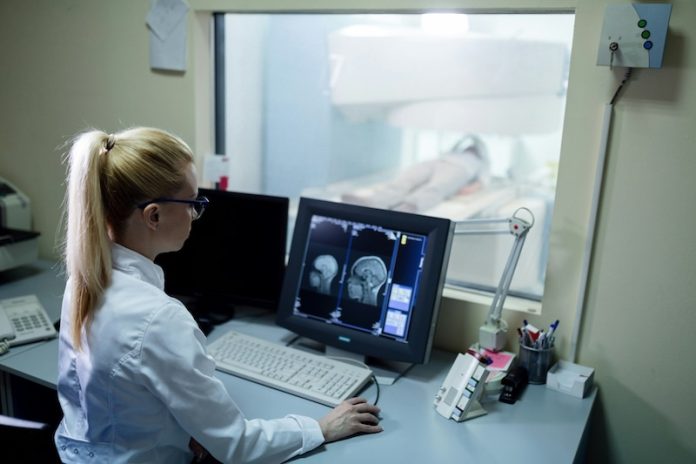
A team of researchers from the Lamarr Institute and the University of Bonn has explored a new way to improve how nerve pathways in the brain are visualized.
Their study, conducted in collaboration with the Translational Neuroimaging Group at the University Hospital Bonn (UKB) and published in NeuroImage: Clinical, investigates how artificial intelligence (AI) can enhance the accuracy of brain imaging. This advancement could ultimately help make complex neurosurgical procedures safer.
The Challenge of Mapping the Brain’s Nerve Pathways
The brain is a complex network of nerve cells connected by thin, delicate pathways known as nerve fibers or tracts. These fibers are responsible for essential functions such as movement, speech, and thought.
During brain surgery—especially procedures for conditions like epilepsy—surgeons need precise information about these pathways to avoid damaging critical brain functions.
One of the most important tools for mapping nerve pathways is tractography, a technique that uses specialized MRI scans to predict the location of these connections.
However, standard tractography methods rely on mathematical models that often struggle to provide accurate results, particularly in patients whose brains have been altered by disease or surgery. This is where AI offers a promising solution.
How AI Improves Tractography
AI-based systems, such as TractSeg, use machine learning to analyze MRI data and recognize patterns, allowing them to generate more precise reconstructions of nerve pathways. However, while these AI methods show promise, they also come with challenges.
The research team tested TractSeg on epilepsy patients who had undergone a hemispherotomy, a surgical procedure that disconnects the two halves of the brain. While the AI model worked well in many cases, it also made significant errors.
In some instances, it reconstructed nerve pathways that no longer existed due to the surgery—a problem known as “hallucination.” In other cases, it failed to detect remaining pathways, leading to incomplete or incorrect reconstructions.
A Hybrid Approach for Better Accuracy
To improve accuracy, the researchers developed a new hybrid method that combines AI with traditional imaging techniques. This approach allows AI to enhance the reconstructions while ensuring that only real, existing nerve connections are visualized. The result was a significant improvement:
- No more hallucinations of non-existent pathways
- Better detection of preserved nerve connections
- Overall more reliable reconstructions, even in healthy brains
Prof. Dr. Thomas Schultz, a lead investigator in the study, emphasized the importance of this breakthrough. “Our study demonstrates both the potential and the limitations of AI-powered tractography in clinical applications.
Combining AI with traditional methods offers a promising solution for more precise reconstructions, especially when dealing with patient data affected by pathological changes.”
Future Implications for Neurosurgery
The research team aims to refine this hybrid technique further and eventually apply it in real-world neurosurgical settings. By improving the accuracy of brain imaging, this technology could help surgeons plan and perform complex procedures with greater confidence, reducing the risk of complications and improving patient outcomes.
As AI continues to evolve, its integration with medical imaging may revolutionize how doctors understand and treat brain conditions, making surgeries safer and more effective for patients worldwide.
If you care about brain health, please read studies about vitamin D deficiency linked to Alzheimer’s and vascular dementia, and blood pressure problem at night may increase Alzheimer’s risk.
For more information about brain health, please see recent studies about antioxidants that could help reduce dementia risk, and epilepsy drug may help treat Alzheimer’s disease.
The research findings can be found in NeuroImage: Clinical.
Copyright © 2025 Knowridge Science Report. All rights reserved.



